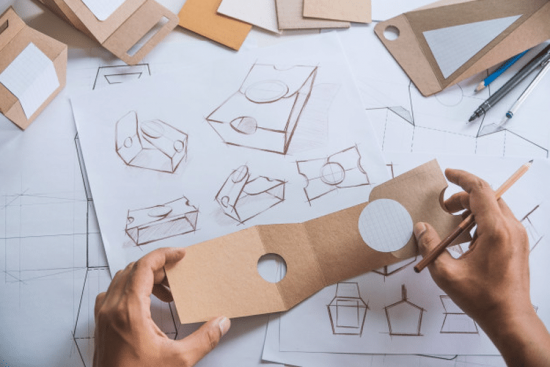Examples of the application of anthropometry in industrial sector are discussed in the following article.
Anthropometry, the science of studying human body dimensions from head to toe, is applied in various fields related to human activities, including medicine, sports, architecture, ergonomics, occupational health and safety (OHS), and biomechanics.
In the industrial sector, anthropometry is particularly utilized to develop a productive work system and reduce workplace accidents. This article will explore the application of anthropometry in industrial sector, covering its definition, application principles, and case examples.
Introduction to Anthropometry
According to Sanders & McCormick (1987), anthropometry is defined as the measurement of body dimensions or other physical characteristics relevant to the design of items people use. This implies that anthropometric data serves as a reference when creating products or tools intended to support human activities.
The term “anthropometry” is derived from the ancient Greek words “anthros” (meaning human) and “metron” (meaning measurement). Essentially, anthropometry refers to the measurement of the human body, encompassing all dimensions from head to toe, not just limited to the head, torso, or feet.

From an ergonomic standpoint, anthropometry for designing work systems is classified into two categories: static and dynamic anthropometry.
1. Static Anthropometry
As the name implies, static anthropometry involves measuring body dimensions in a stationary position or along the body’s linear shape. This type of measurement is also referred to as structural anthropometry, as the dimensions measured correspond to the body’s structure.
Examples of static anthropometric measurements include measuring eye height, head circumference, facial dimensions, foot size, and various other body structure dimensions.
2. Dynamic Anthropometry
In contrast to static anthropometry, dynamic anthropometry involves measuring human positions while in motion. Dynamic, also referred to as functional measurements, predict the range of motion of humans through anthropometry. Dynamic anthropometry not only estimates range of motion but also predicts the movements that may occur when individuals, particularly workers, engage in activities.
Examples of dynamic anthropometric measurements include assessing the maximum reach of the hand, the rotation angle of the hand, ankle joint rotation, and various other dimensions related to movement.
Anthropometry in Industrial Sector
The implementation of anthropometry in the industrial sector is closely linked to the field of ergonomics, which studies the interaction between humans and their work environment or tasks. Ergonomics is divided into two categories: macro ergonomics and micro ergonomics. As their names suggest, these two types of ergonomics are categorized based on their scope. “Macro” refers to larger or broader, while “micro” denotes smaller or narrower.
Macro Ergonomics
As previously mentioned, macro ergonomics encompasses a broad range of areas, including micro ergonomics within its scope. Specifically, macro ergonomics addresses all societal levels, ranging from groups or organizations to corporations, broader society, and even nations. This form of ergonomics is considered integrated as it involves the amalgamation of knowledge, methods, and equipment from diverse systems.
Ergonomics is applied in various settings, beginning from small-scale work systems like a household. This includes designing the layout of living spaces within a house, such as the height and width of rooms, which are tailored to human body dimensions or anthropometry.
Micro Ergonomics
Unlike macro ergonomics, micro ergonomics has a more limited scope, focusing solely on the dimensions of a single company building. In industry, the application of micro ergonomics goes beyond optimizing efficiency; it also prioritizes human health, safety, and comfort in the workplace.

Through the application of anthropometry and micro ergonomics, companies can enhance productivity while reducing the likelihood of worker fatigue or workplace accidents.
Examples Showcasing the Application of Anthropometry in Industrial Sector
Common examples showcasing the application of anthropometry in the industrial sector include:
1. Measurement of Stature Positions for Work Space Design
Anthropometric measurements of stature or standing position refer to the vertical distance from the floor to the top of the head. These measurements are essential for various design applications that necessitate body length assessments in standing, supine (lying on the back), or prone (lying face down) positions. Particularly for supine and prone measurements, it’s crucial to add 15mm to the adult body height.
Also Read: Application of Anthropometric in Designing Work Systems
2. Anthropometric Measurements in the Design of Welding Tables
In the manufacturing sector, particularly in the context of welding table design, anthropometric data serves as a crucial reference. Below are several anthropometric dimensions utilized as benchmarks for determining welding table sizes:
- Standing elbow height (Seh) refers to the height of the elbow in an upright standing position.
- Elbow length (El) is measured from the elbow to the tip of the radius in a perpendicular position.
- Hand reach (Hr) is the distance from the shoulder to the fingertips when the hand extends forward.
- Upper arm length (Ual) denotes the length from the elbow to the shoulder.
3. Anthropometric Measurements in Product Design
Anthropometryin industrial sector plays a crucial role in product design, particularly when incorporating ergonomic principles. An example of using anthropometric measurements in product design includes designing gloves, motorcycle or bicycle handles, shoes, pedals, earphones, and various other items.

For the mentioned product, 25 hand anthropometric measurements serve as reference data. The necessary hand anthropometric dimensions are as follows:
- Thumb width
- Index finger width
- Middle finger width
- Ring finger width
- Little finger width
- Thumb length
- Index finger length
- Middle finger length
- Ring finger length
- Little finger length
- Hand metacarpal thickness
- Thumb thickness
- Thumb thickness
- Finger thickness
- Holding hand length
- Grasping hand width
- Hand length
- Palm length
- Metacarpal hand width
- Width of hand to thumb
- Little finger-thumb distance
- Maximum grip diameter
- Minimum grip diameter
- Fist width
- Fist height
Most Accurate Anthropometric Measurement Tools
1. Anthropometric Chair
Metrisis – Anthropometric Chair is a cutting-edge tool for measuring up to 34 dimensions of the human body. This chair-shaped instrument is adjustable, enabling measurements in standing, sitting, and even facial dimensions. Below are the specifics of utilizing the Anthropometric Chair:

2. Portable Anthropometry
Metrisis – Portable Anthropometry crafted by Solo Abadi Indonesia, is a mobile version of the anthropometric chair, designed for easy transport. This innovative device enables measurement of over 100 dimensions of the human body.
Product Detail:
Contact Us To Get Anthropometry Products
Get anthropometric measuring tools from Solo Abadi by filling in the available ask for price. You can also connect directly through our WhatsApp, because we are ready to contact you immediately.








